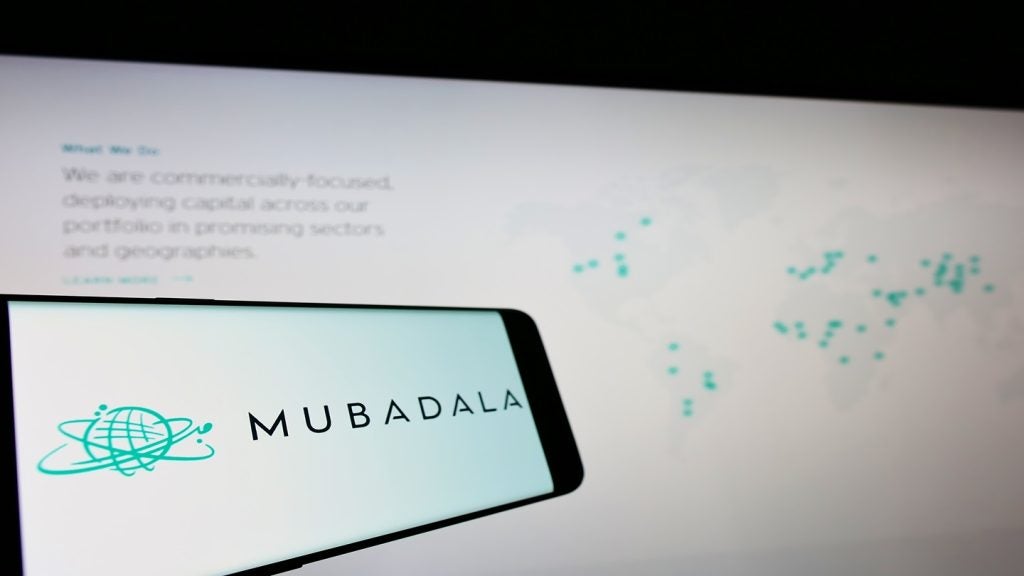As wealthy individuals increase their demand for digital channels and easily accessible information on their portfolios, beyond the traditional face to face meetings with relationship managers, private banks and wealth managers must evaluate their digital priorities to successfully keep up with client demands. John Schaffer talks to private banks in Europe to understand their digital journeys
The wealth management and private banking industry has gained a reputation for being behind in the digital innovation race incomparison to other industries. In a world where Apple and Amazon have made technology an expectation rather than merely an added bonus, the wealth management industry cannot ignore the general mega trend towards digital.
In the retail banking sphere, digital channels are gradually becoming more ubiquitous and in some cases even replacing the functionof branches. However, the wealth management and private banking industry is traditionally associated with face to face contact where the role of a relationship manager (RM) is key when managing assets of large value, and advising clients on their portfolios. Clients also engage in personal contact due to the complex nature of some issues that they face, such as regulatory issues.Therefore the expertise of an RM holds much weight.
In comparison to functional retail banking digital channels, the private banking counterparts must demonstrate greater depth andbreadth in their offerings in order to add real value for a high or ultra high net worth (HNW, UHNW) client. As opposed to merely checking balances and performing basic bank transfers, private banking clients want to view more detailed portfolio information, want access to granular data, as well as expect more sophisticated engagement capabilities such as financial advice.
A survey of HNWIs from Capgemini and RBC Wealth Management for the World Wealth Report 2014, reveals that 55.6% of European wealth management clients say that most or all of their relationship is conducted via digital channels and 61.5% expect their wealth management relationship to be further digitised in the future.
How well do you really know your competitors?
Access the most comprehensive Company Profiles on the market, powered by GlobalData. Save hours of research. Gain competitive edge.

Thank you!
Your download email will arrive shortly
Not ready to buy yet? Download a free sample
We are confident about the unique quality of our Company Profiles. However, we want you to make the most beneficial decision for your business, so we offer a free sample that you can download by submitting the below form
By GlobalDataThe World Wealth Report 2014 also suggests that 62.7% of HNW European clients would leave their wealth management firm, due to a lack of integrated channel experience. This figure is even more significant in regions such as Asia-Pacific (82.8%) and Latin America (87.1%).
The report also reveals that 50% of HNWIs under 40 would leave their wealth manager if there was no way to engage digitally.
However, clients over the age of 60 are less likely to be swayed by a lack of digital offerings, with 20.5% saying that they would leave.

What’s on offer?
Private banks in Europe are continuing to increase and fine tune their digital capabilities. Lloyds Bank’s private banking clients in the UK are able to use the group’s main digital proposition, which is an extension of the lender’s retail banking facilities. The offering is tailored for both desktop and mobile devices and allows clients to view their accounts, make UK and international payments andtransfers, as well as stay informed of the bank’s reward programmes.
Lloyds Bank has also introduced screen sharing and video conference technology, giving the private banking clients more choice when it comes to how they would like to transact with the bank.
In March 2015, Lloyds reported that £1.2bn payments and transfers had been made from private banking clients via digital channels.
Phil Allen, digital director for wealth and investments at Lloyds, tells PBI:
"Approximately 40% of our private banking clients are digitally active, a 10% increase year on year. Customers continue to use a mix of face to face and digital channels, with mobile starting to gain more traction.
"In March 2015, 34% of logins were from a mobile device, an 84% year on year increase."
Barclays on the other hand launched a mobile banking application for its UK HNW clients in July 2014. The app is part of a web portal for private banking clients called "Barclays One". The service allows clients a view of their holistic investment and banking accounts and holdings in UK onshore and offshore locations. The web based service also provides clients with wealth research publications and access to more general online banking features. Barclays One is actively used by approximately 5,000 clients, with
30% of private banking clients engaging via smartphone or tablet devices.
Barclays also uses biometrics technology for authentication of HNW clients. Christian Berchem, managing director and head of the London region at Barclays Wealth and Investment Management, tells PBI:
"Voice biometrics has been available for Barclays Wealth and Investment Management clients since June 2012 and is being rolled out to corporate and personal banking customers. Our global service centres now authenticate more clients through voice biometrics than any other means of security."
Boutique private bank in the UK, Arbuthnot Latham, launched its online banking service in 2004. It added mobile banking functionalities in 2014. Andy Mattocks, COO and head of corporate development at Arbuthnot Latham, tells PBI that approximately 1,500 of the 3,500 client base are using online banking channels and around 25% of them are using the bank’s mobile app.
Arbuthnot Latham’s digital offerings allow clients to view transactions, look at statements and carry out other basic e-bankingfunctions such as standing orders. The bank also offers an investment portal, which allows clients to view their investment portfolio.
However, clients are not able to make transactions on an investment basis.
The bank is also engaging with clients more via social media with 770 followers on Linkedin and 450 on Twitter. Mattocks tells PBI,
"Social media is a mechanism for us to engage with existing clients, potential clients and people that are in our network that we know."
For France-headquartered Societe Generale Private Bank (SGPB), the transformation of its digital or customer interface is one of the three pillars of its all-round IT rejuvenation plan (the other two being about data storage of customer information and data analytics).
SGPB links all its products and services to the customers through a series of apps and the digital transformation journey entails the deployment of a sophisticated e-banking platform for wealthy clients so that they have the full spectrum of options to transact
– "bonds, shares, forex, money market, whatever the asset class", head of Societe Generale Private Banking, Jean-Francois Mazaud,
told PBI recently.
SGPB’s e-banking app is particularly popular in France where there have been over 35m downloads.
SGPB Hambros, the bank’s UK division, launched a new e-banking platform earlier in 2015. The service includes an improved Client Relationship Management (CRM) tool and an enhanced portfolio management system with more flexibility in accessing information such as portfolio valuations, positions and performances.
The bank is looking to launch further e-banking platforms internationally over 2015 and 2016, with an aim to complete a digitaltransformation project in 2017 for all of SGPB’s locations. Mazaud told PBI:
"Our digital transformation is a long journey and it will take a few years to be fully implemented but it is exciting and creating positive
energy within the team."
Citi Private Bank currently offers a mobile app for Apple devices called "In View". The service, launched in February 2014, allowsclients to view their portfolios in detail and analyse key metrics, alongside performing basic transactions through the app. The mobile app also gives Citi Private Banking clients access to various research articles related to their portfolios.
A significant feature of Citi’s digital offerings is their onboarding toolkit. The bank plans to release a wet signature functionality,enabling clients to use their finger or a stylus to sign documents.
Tim Tate, director of client experience and innovation at Citi private bank, tells PBI: "It’s a significant step forward from the days of turning up with a pile of documents and expecting clients to fill in their name and address 20 times just to open an account."
Citi was an early adopter of mobile provisions for private banking clients. The release of the app comes as an update to the bank’s private banking app, which was released in 2010. Tate tells PBI that approximately 60% of the bank’s private banking clients are registered for digital channels, with half of them regularly using the digital platforms.
He adds that engagement is still "skewed towards desktop rather than mobile", but expects mobile usage to continually increase.
Swiss private bank Lombard Odier is also strongly riding the digital wave with its asset and investment management system, which was created in-house. Lombard Odier is now on the third version of its systems and the latest online and mobile banking app version is called G3.
The app is available for Apple devices and is a dedicated wealth management system, with the capability of accessing a large volume of data. It can carry out difficult transactions, such as cross border transactions for instance, within seconds.
Effect on RMs and client autonomy
Although technology innovations are driven by a desire to make clients’ lives easier, the RMs at private banks and wealth management firms are directly affected by it. As a lot of their tasks become automated and the demand for more comprehensive digital solutions increases, the RM’s role is going through a massive shift.
Citi’s Tate says that tablet interaction is a tool that can actually benefit RMs, as it can improve the quality of advisory meetings with their clients.
"If you think back five years ago, you would turn up to a meeting and the most you would see in terms of technology was someone opening up a laptop and projecting a PowerPoint presentation onto a screen. When we started to look at tablets, it became clear very quickly that there was now an opportunity for two people to sit down together, interact with the information on the screen and pass the device between them. It felt like a much more collaborative experience."
However, Tate feels that the current impact of digital channels on the role of RMs has been modest, due to the difficulties surrounding legacy systems.
Going forward, he sees digital channels becoming more personalised, enabling clients to have more information during meetings with their advisors: "The client has the upper hand because they come into the meeting more prepared than they can today. By having access to all the information at any time, they can ensure they ask all the questions rather than the banker leading the conversation."
Although there is clear competition from new, online-only entrants into the wealth management industry, such as Nutmeg andWealthfront, who are challenging the traditional, face-to-face advisory model, David Bruno, head of innovation and digital at UBS wealth management, says that RMs are still key while working with UHNWIs.
"To move CHF10,000 is pretty easy digitally. But to move a few million pounds across borders in a trust environment – if you’ve had a liquidity event as an entrepreneur and you’re fully digital – you still typically use an advisor to make sure you’re doing things right, at least at the checkpoint.
"In our client base, when we work across most of the countries in the world, the clients still need that human touch point and our digital channels enable the advisor to have a better discussion with the client."
With an increase in scrutiny centred around the private banking and wealth management industry, some clients have become far more self-directed with regards to their portfolio management. The World Wealth Report 2014, reveals that of the HNWIs who describe themselves as self-directed, 68.6% would consider moving to another firm if digital channels were not present.
However, Bruno says that he has not seen digital channels pushing clients to become more autonomous.
He says that although digital channels give clients greater experiences and content, clients have much of the same behaviours if they are engaged in long term investments.
Tate, Citi, agrees, saying:
"Some of our clients will execute things themselves and be a little more autonomous than they are today, but they still expect to have conversations around their investments – either with the product specialists on the desks, the investment councillors or thebankers before they make their final decisions."







